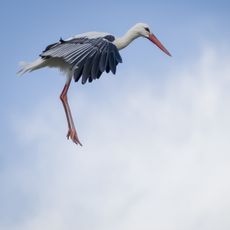Beavers may be back
Beavers, which were hunted to extinction in Britain in the 16th century, could be reintroduced to England and Wales following an initial feasibility study


Beavers, which were hunted to extinction in Britain in the 16th century, could be reintroduced to England and Wales following the publication today of an initial feasibility study by Natural England and the People’s Trust for Endangered Species.
Most people agree that beavers would make an enchanting addition to Britain’s wildlife—they have been reintroduced in 24 European countries where they are a fully protected species—but opinion is divided as to the practicalities.
Supporters say areas of slow-moving water created by beaver dams have ecological benefits, and there is the potential boost to tourism.
The Welsh Assembly has already approved the idea of the beaver’s comeback, while the Scottish Wildlife Trust has embarked on a six-year reintroduction programme, which is Britain’s first mammal reintroduction.
The four beaver families imported from Norway last November are due to be released at Knapdale, mid-Argyll, in May, and are currently in quarantine with beaver expert Derek Gow in Devon—from which one male made a high-profile escape and apparently travelled some distance.
Dr Steve Tapper of the Game & Wildlife Conservation Trust, comments, ‘Derek Gow and his team are highly competent, but we would be worried if there was a view that beavers should be everywhere.
‘Beavers aren’t like water voles—they’re the size of a spaniel, and they can modify the environment in a major way. They cut down trees and block smaller waterways, including culverts, causing flooding, and they would certainly be a barrier to migrating trout and salmon. They burrow into banks, which would affect canals, and could cause havoc in a sewage farm. This will only work if there is the full co-operation of landowners.’
Sign up for the Country Life Newsletter
Exquisite houses, the beauty of Nature, and how to get the most from your life, straight to your inbox.
CLA president Henry Aubrey-Fletcher says, ‘Our biggest concern is where the beaver would fit into today’s modern, working English countryside. Beavers will destroy crops, particularly wheat and maze.
‘At a time when we should all be working to protect supplies of food and the natural environment, it seems ridiculous to be introducing a species that would threaten both.’
The NFU’s countryside advisor, Andrea Graham, said, ‘Reported escapes from a stock-proof enclosure in Devon demonstrate that any controlled reintroduction could prove difficult to contain. It is unwise to make direct comparisons with experiences of reintroductions in other European countries where catchments, scale, infrastructure and farming systems are different.
‘Given the economic climate and the fact we should be addressing the challenges to halt the decline of our existing resident wildlife plus the “shallow support from the public”, this would seem to be a costly luxury.
‘We are also concerned that beaver sites may conflict with future planning or development if they were to become protected in a similar manner to, for example, badger setts. They should receive no statutory protection like badgers.’
The board of Natural England has not yet considered its position on beaver reintroductions, but Britain, as an EU member state, has a legal obligation to at least consider it.
The report says, ‘It is clearly feasible to reintroduce beavers into England with many consequent benefits, not least the potential for them to assist with river and floodplain restoration.’
However, the report points out that there would have to be pre-emptive management at any candidate site to protect vulnerable trees and crops, plus clarification of who was in charge of the beavers and monitoring for at least five years.
Areas mooted for beaver reintroduction are the Weald of Kent, New Forest, Bodmin Moor, Peak District, Lake District and Forest of Bowland.
Country Life is unlike any other magazine: the only glossy weekly on the newsstand and the only magazine that has been guest-edited by HRH The King not once, but twice. It is a celebration of modern rural life and all its diverse joys and pleasures — that was first published in Queen Victoria's Diamond Jubilee year. Our eclectic mixture of witty and informative content — from the most up-to-date property news and commentary and a coveted glimpse inside some of the UK's best houses and gardens, to gardening, the arts and interior design, written by experts in their field — still cannot be found in print or online, anywhere else.
-
 A well-connected rural playground with 23 acres on the edge of the South Downs National Park
A well-connected rural playground with 23 acres on the edge of the South Downs National ParkOld House Farm is an impressive family home with a wealth of amenities that would inspire any rural passion.
By Arabella Youens Published
-
 The UK gets its first ‘European stork village’ — and it's in West Sussex
The UK gets its first ‘European stork village’ — and it's in West SussexAlthough the mortality rate among white storks can be up to 90%, the future looks rosy for breeding pairs in southern England.
By Rosie Paterson Published
